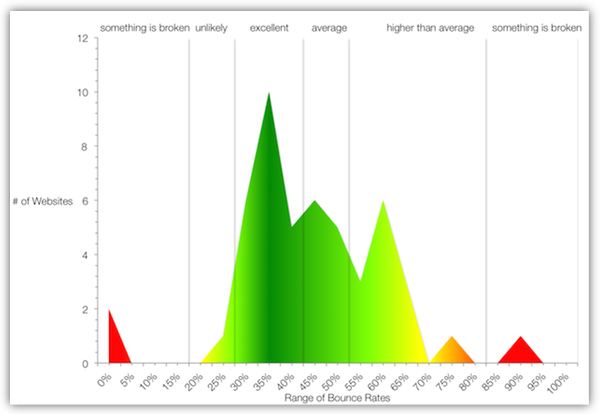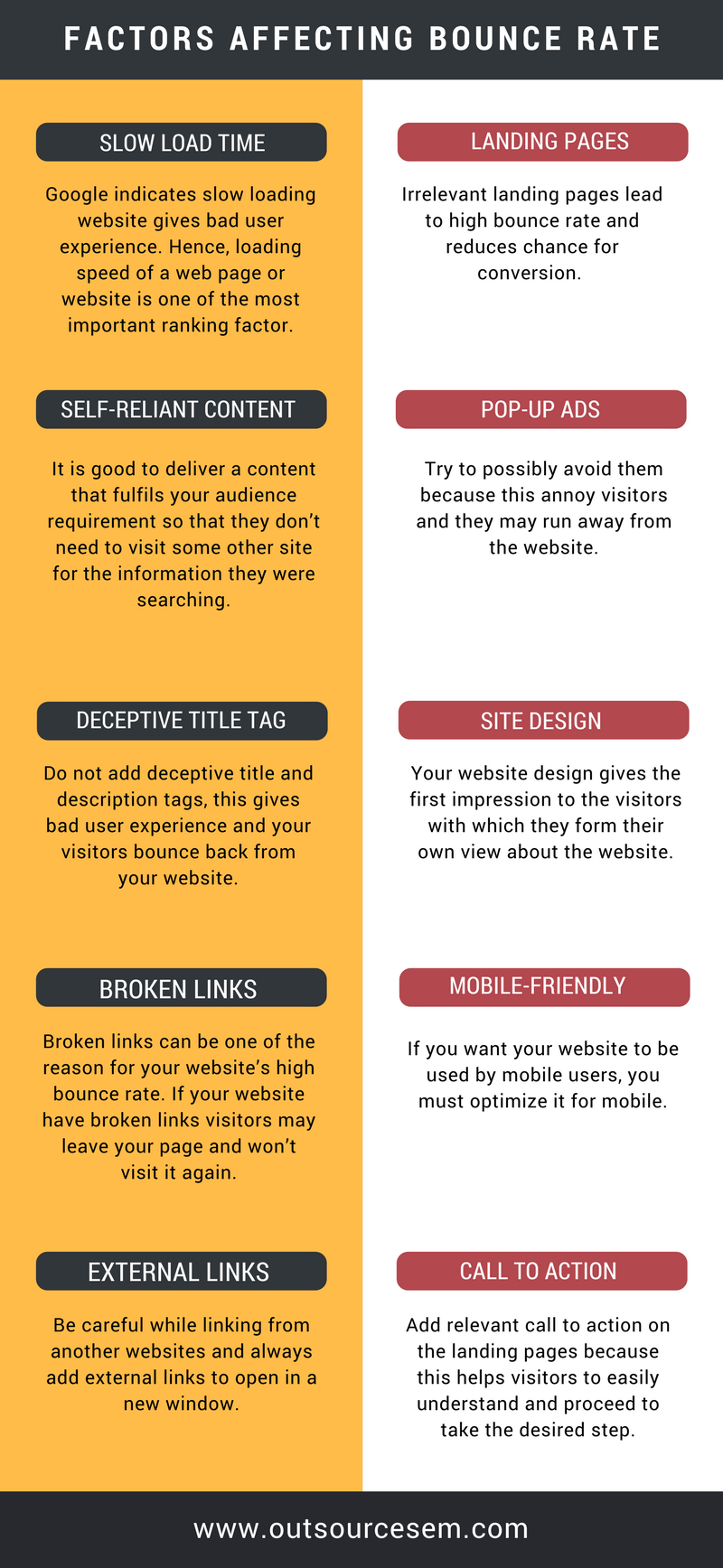If you don’t consider “bounce rate” as important metrics and underestimate it then you must know that, it is one of the most crucial metrics which is very helpful in improving conversions and sales. Bounce rate also lets you understand your website’s stickiness, engagement level, and quality of content. Today We’ll discuss, what is bounce rate and how to calculate bounce rate? Is website’s bounce rate a matter of concern? If yes, then how to reduce your website’s bounce rate?
Bounce rate refers to the percentage of visitors to a particular website who navigate or “bounce” away after viewing only one page of the website. Try to reduce your website’s bounce rate because high bounce rate indicates that your website is not pertinent to the visitors and it may also affect your Google ranking. Correspondingly, reduced bounce rate is significant for the success of a website.
How to calculate bounce rate?
Bounce rate is calculated by dividing total number of visits viewing one page only by total entries to page i.e.
Rb = (Tv)/(Te)
Here,
Rb = Bounce Rate
Tv = Total number of visits viewing one page only
Te = Total entries to page
What should be an average bounce rate?
Below is a chart which clearly describes the average bounce rate.

This graph illustrates that normally most of the websites has bounce rate between 26% - 70% but websites with bounce rate between 26% - 40% are excellent. Besides the websites with bounce rate less than 25% or more than 70% are not good and have some issues or we can say that something is broken.
Now you must be thinking, is website’s bounce rate a matter of concern? I would say yes and being as a digital marketing company you must check your website’s bounce rate and the factors affecting your bounce rate. Here I have discussed some of the factors that affects your website’s bounce rate and how to fix them.
Factors affecting bounce rate

• Slow load time: Google indicates slow loading website gives bad user experience. Hence, loading speed of a web page or website is one of the most important ranking factor and if the website has slow loading speed visitors may leave your page without going through it. You can refer my blog “site speed affects your Google ranking” to understand why site speed matters and how to improve your website’s loading speed.
• Self-reliant content: It is good to deliver a content that fulfils your audience requirement so that they don’t need to visit some other site for the information they were searching. Because when visitors spend more than 1 minute on your website, Google considers your website extremely relevant to the visitors search request. You can check time spent on your website by looking average session duration from Google Analytics .
• Deceptive title tag or meta description: Do not add deceptive title and description tags, this gives bad user experience and your visitors bounce back from your website. Hence, I would suggest to recheck your content and add relevant title and description for them. Also you have to add some relevant keywords in your title as well as in your description, and for that you have to go through the keyword research to check which keyword is relevant and useful for you.
• Broken links: Broken links can be one of the reason for your website’s high bounce rate. If your website have broken links visitors may leave your page and won’t visit it again. Refer my blog “Ultimate guide to broken links” to understand the main factors that cause broken links.
• External links: Be careful while linking from another websites and always add external links to open in a new window. Moreover provide relevant anchor text and content to the links.
• Landing pages: Irrelevant landing pages lead to high bounce rate and reduces chance for conversion. Hence, make your landing page more convincing and attractive with all relevant information.
• Pop-up ads, newsletters or surveys: Don’t overdo with ads, pop-up surveys, and email subscribe buttons. Try to possibly avoid them because this annoy visitors and they may run away from the website.
• Site design: Your website design gives the first impression to the visitors with which they form their own view about the website. Therefore, it is important to make your website look simple, attractive and convincing. So that visitors could easily understand the professionalism.
• Mobile-friendly pages: If you want your website to be used by mobile users, you must optimize it for mobile. Designing your websites to be mobile friendly ensures that your pages perform well on all devices.
• Create call to action on landing pages: Add relevant call to action on the landing pages because this helps visitors to easily understand and proceed to take the desired step. This call to action can either be in the form of a button, banner, links, videos etc.
Is high bounce rate always considered to be bad?
No, not necessarily because sometimes it depends on the purpose of the website. Different websites have different goals like generating telephone leads or searching for facts. This type of websites may have high bounce rate because as visitors find the information they will quit the website that will cause high bounce rate. Even though, it does not cause any difficulty because it fulfils its core reason of generating leads.
Final words
It is good to examine your website’s bounce rate after certain period of time or whenever you get time because it has technical benefits from SEO (Search Engine Optimization) perspective. Search engines essentially concentrate on user-engagement for their ranking factor and therefore it is important to keep your website good with the above mentioned points. Hopefully you have now understood the importance of bounce rate and could find the cause of your website’s high bounce rate.
